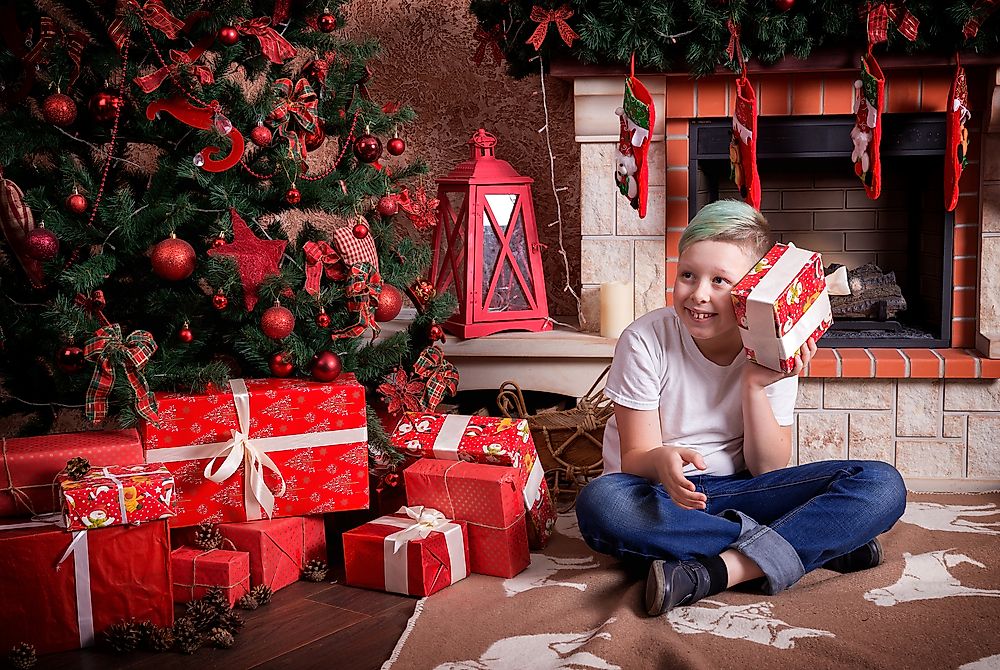What Are Yule Lads?

Celebrating Christmas in Iceland slightly differs with other European countries. While other countries have one Santa, Iceland has thirteen Yule Lads who visit children. Starting December 12, Yule Lads descend from their mountain, visiting children each day until Christmas.
History and Origin of Yule Lads
Yule Lads (jólasveinarnir or jólasveinar), also known as Yuletide-lads or Yulemen, originated from Iceland fork tales. Traditional folklore tells that the Yule Lads as the sons of Gryla, who collects bad children and eats them. Gryla dominates various books often defined as a tall, ogre woman that walks around the rural areas. She is big, self-centered, and at times appears to have hooves and horns.
At the start, Yule Lads mainly visited the urban areas but would also visit the countryside. Although Yule Lads were initially 82 in number, in the 1860s, their names and numbers went down to thirteen. The behavior of the Yule Lads also moderated from criminal harassers to fun pranksters over time.
The Thirteen Yule Lads
The remaining Yule Lads include:
- Sheep-Cote Clod (Stekkjarstaur) - sneaks into farmer's sheds to suckle milk from the yews
- Gully Gawk (Giljagaur) - sneaks into cowsheds to steal the farmer's milk
- Stubby (Stúfur) - very short, steals frying pans to eat the leftovers
- Spoon-Licker (Þvörusleikir) - extremely thin, steals and licks spoons
- Pot-Scraper (Pottaskefill) - steals unwashed pots to scrape out leftovers
- Bowl-Licker (Askasleikir) - hides under beds to steal bowls of food
- Door-Slammer (Hurðaskellir) - wakes households by slamming doors throughout the night
- Skyr-Gobbler (Skyrgámur) - steals and eats skyr, a type of Icelandic yogurt
- Sausage-Swiper (Bjúgnakrækir) - sneaks into homes to swipe sausages
- Window-Peeper (Gluggagægir) - peeps through windows looking for things to steal
- Doorway-Sniffer (Gáttaþefur) - uses his large nose and excellent sense of smell to steal Laufabrauð, a type of Icelandic Christmas bread
- Meat-Hook (Ketkrókur) - uses a hook to steal any meat left out, but especially smoked lamb
- Candle-Stealer (Kertasníkir) - steals candles, especially from children
Transformation of Yule Lads
Traditionally, Yule Lads were associated with self-centeredness and regarded as evil. However, in 18th and 19th centuries they began changing and became loving. In fact, a royal decree was issued in the 18th century which abolished the religious practices and domestic punishment to children by scaring them using horror monster stories like Yule Lads. Old folk tales presented the Yule Lads as monsters looking slightly similar to people. Later on in the 19th century they assumed a more human nature. Thereafter, when rich people hosted public Christmases, Yule Lads were gentle old men with nice treats. In 1930s, Yule Lads began transforming by making frequent school visits and appearing on radio stations telling stories to children and singing Christmas related songs.
Functions of Yule Lads
The main function of Yule Lads is to reward or punish children depending on their behavior. They place gifts or disgusting items in children’s shoes on windowsills. They do so for thirteen nights before the Christmas festival. Each night a single Yule Lad visits each child giving gifts or rotten potatoes according to every child’s character within a year.
Modern Day Yule Lads
The modern Yule Lads have assumed more friendly and beneficial roles. In fact, their role is similar to that of the modern day Santa Claus. The Yule Lads bring good tidings during Christmas. They adorn themselves in Icelandic clothing. Yule Lads are associated with people masking themselves and walking around farms before and after Christmas. People wear goatskins and visit nearby farms pretending to be supernatural spirits coming from mountains.At times, Yule Lads wear costumes similar to those of Santa.











